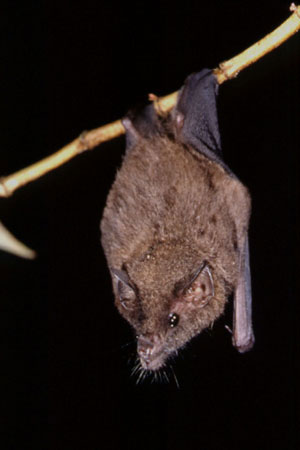
The New World leaf-nosed bats (Phyllostomidae) are bats found from southern North America to South America, specifically from the Southwest United States to northern Argentina. They are ecologically the most varied and diverse family within the order Chiroptera. Most species are insectivorous, but the phyllostomid bats include within their number true predatory species and frugivores. For example, the spectral bat, the largest bat in the Americas, eats vertebrate prey, including small, dove-sized birds. Members of this family have evolved to use food groups such as fruit, nectar, pollen, insects, frogs, other bats, and small vertebrates, and in the case of the vampire bats, even blood.

The tailed tailless bat is a species of leaf-nosed bat from South America.

Geoffroy's tailless bat is a species of phyllostomid bat from the American tropics.

Dekeyser's nectar bat is a bat species found in Brazil and Bolivia.

The banana bat is an endangered species of bat in the family Phyllostomidae. It is also commonly known as the trumpet-nosed bat or the Colima long-nosed bat.

Glossophaginae is a subfamily of leaf-nosed bats.

Anoura peruana is a species of bat from Colombia and Peru. It was elevated to a species in 2010, after previously being considered a subspecies of Geoffroy's tailless bat. The females are larger than the males.

Cadena's tailless bat is a species of bat native to Colombia. In 2006 it was described as a separate species from the tailed tailless bat species complex.

Anoura aequatoris is a species of microbat that lives in South America in the countries of Bolivia, Colombia, Ecuador, and Peru.








